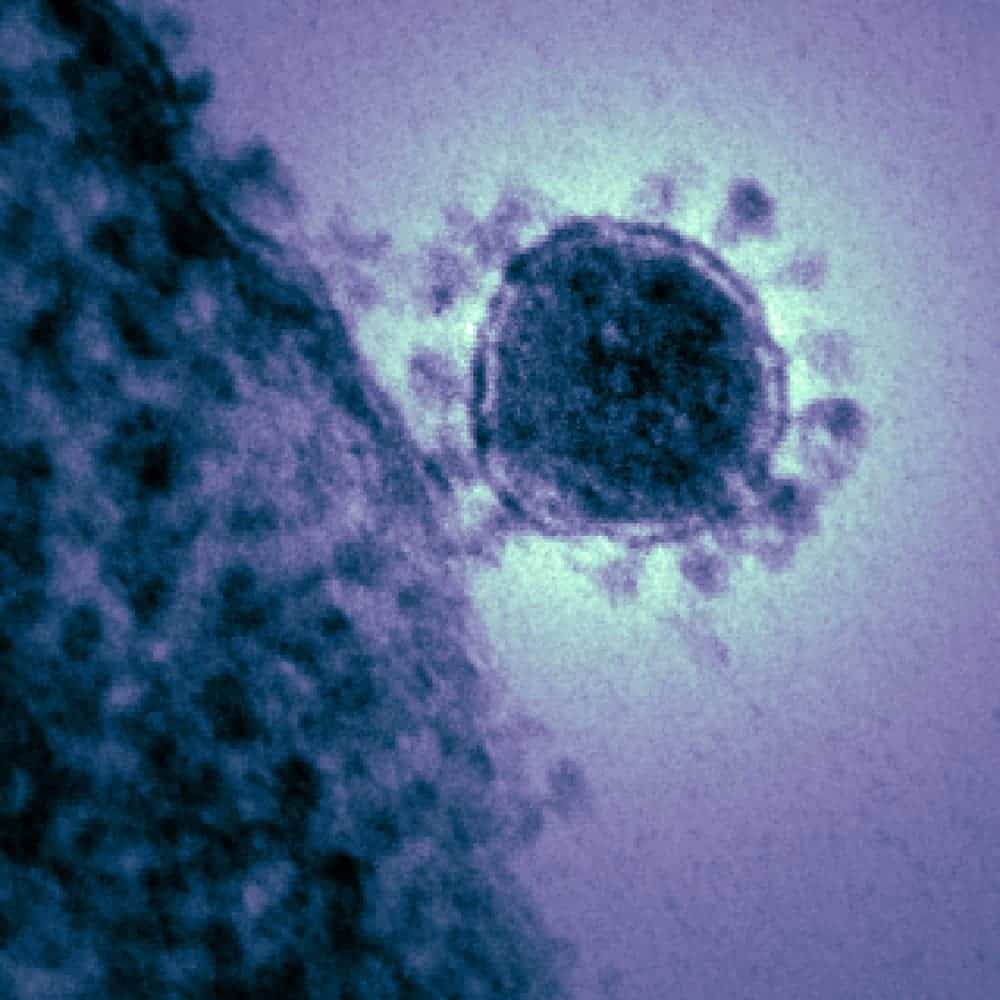The recent coronavirus outbreak from Wuhan, China (called 2019 Novel Coronavirus, or just 2019-nCoV,), has taken the world by storm. As of January 29, more than 6,000 total cases have been reported worldwide, with the disease killing 132 people so far, all of them in China.
The situation is still unfolding and there are many questions yet to be answered, but researchers have been very active and we’ve already learned quite a bit about it. Here’s what we know about it and some information about what you can do.
This article is updated regularly.
What’s a coronavirus anyway?

Coronaviruses are pretty common in nature. This family of viruses has multiple strains, which can infect both animals and humans. They get their name from their distinctive shape, which resembles that of the solar corona.
We’ve known about them for quite a while, and researchers have studied them extensively. Probably the most well-known coronavirus is SARS (severe acute respiratory syndrome), which caused an outbreak similar to this one in 2003, also in China. In that SARS outbreak, there were over 8,000 cases, with approximately 800 fatalities.
How did the novel coronavirus outbreak start?
Although this is still a matter of active investigation, existing evidence (which includes genome analysis) suggests that the virus moved to humans in a food market in Wuhan, China. This is a so-called “wet market”, which sells food and living animals alongside other products.
Recent research also indicates that the virus probably came from bats, but not directly — it first went from bats to snakes, and then to humans. This marks a remarkable transition because it’s not always possible for viruses to jump between cold-blooded and warm-blooded animals.
How is the coronavirus spread?
At first, the virus was only known to emerge from animals, but it now seems to be spreading from person to person. It’s not clear just how likely it is to spread from person to person, and if the spread is done through breathing or other means.
The virus appears to be mutating and changing, which could make the virus spread faster and more easily.
How contagious is the coronavirus?

Confirmed coronavirus cases have skyrocketed over the past few days, but it’s not clear just how much of this is due to the virus spreading, or due to having underestimated the number of cases in the first place.
Scientists at Britain’s Imperial College estimate that each coronavirus patient infects 2.6 people — which would make it about as contagious as the average influenza outbreak. However, this is yet to be confirmed and is still only a working hypothesis based on incomplete data.
The virus appears to be more contagious than the 2003 SARS outbreak, as it is also transmissible during its incubation period. This means that the virus can be spread even when there are no symptoms at all, again similar to influenza.
However, scientific evidence is incomplete in this regard. Remarkably, one study published in the Lancet medical journal showed that a child in China passed the virus while asymptomatic. This is different than the disease being transmitted in its incubation period as the child never got sick (never exhibited any symptoms). For now, it appears that the virus can be quite contagious, but the picture is not clear.
What symptoms does coronavirus cause?
Since there have already been several thousand confirmed cases, the symptoms are pretty clear. They are somewhat similar to the flu, but can easily degenerate into pneumonia. The main symptoms are:
- fever;
- dry cough;
- shortness of breath.
The 2019-nCoV can cause pneumonia, infecting and inflaming the air sacs in the lungs, potentially causing them to fill with fluid or pus. This is where the virus becomes really dangerous, particularly for the elderly or people suffering from a pre-existing condition. In the more severe cases, it can also severe acute respiratory syndrome and even kidney failure, medics report.
Some or all of the symptoms may be absent. Fever, for instance, may not be present in the very young, elderly, immunosuppressed, or those taking certain fever-lowering medications. If you are suffering from any such symptoms and have traveled to China recently (or have been in contact with someone who has), please consult with your doctor as soon as possible.
Can coronavirus kill you
Yes. The novel coronavirus can be life-threatening.
Coronaviruses, in general, are not lethal directly — they don’t kill you per se, but they can cause other problems (such as pneumonia) which can kill you.
How dangerous is the outbreak compared to others?
If the number of reported cases is accurate, that would put the mortality rate of the novel coronavirus at about 2.2-2.3%, a figure which seems to have stabilized in the past couple of days. This is significantly different from influenza outbreaks, for instance, which usually have mortality rates around 1,000 times lower, killing around 2 people per 100,000 infections. We don’t know how many real cases there are and how many of these are asymptomatic. The figure mentioned above hinges on several assumptions.
The figures above rely on the idea that the number of reported cases is accurate, but it’s very plausible that the real number of cases is actually much higher, which would make the morbidity lower. People could have the virus and not even know it, brushing it off as the regular flu. There may also be many asymptomatic cases, which again, would change the figures. This is still early days and we don’t know exactly.
The 2003 SARS outbreak had a whopping morbidity rate of 10%, but it was less contagious than the current coronavirus.
Viruses often exhibit a trade-off between how contagious they are, and how lethal they are. If your carrier is killed too quickly, they don’t really have as much time to spread the disease. The novel coronavirus seems to be less lethal than SARS but more lethal than influenza. If the outbreak reaches influenza levels, it could cause a health crisis, but we don’t know yet if it can spread like influenza.
Is there coronavirus in the US?
Yes, the coronavirus has reached several parts of the US.
There are five confirmed cases in the US: in Southern California, Chicago, Arizona, and Washington state. So far, there are no fatalities. The CDC has investigated over 100 suspects, and check-ups are already carried out at several airports. The virus is not currently spreading in the US.
Where has the coronavirus spread?

So far, the virus has spread to several cities in China, as well as several countries in Asia (Thailand, Hong Kong, Taiwan, Japan, Macau, Malaysia, Singapore, Australia, Nepal, Sri Lanka, and Vietnam). There have been confirmed coronaviruses in North America (US, Canada) and Europe (France, Germany). Over 99% of the reported infections, however, have been in China.
A team at the Johns Hopkins Center for Systems Science has developed a real-time map where you can follow the developments (the data is updated daily).
Is there a coronavirus treatment?
There are no specific treatments for illnesses caused by human coronaviruses — it’s not just this novel coronavirus. In China, a select number of patients are being treated with antiviral drugs, but there is no proof of their efficacy.
Most of the time, people recover on their own, and the normal things to relieve your symptoms stand (such as taking pain or fever medication, staying hydrated, staying home and resting).
This particular virus seems to be more dangerous to the elderly or those suffering from other conditions.
However, there is already ongoing work on tailoring treatments for this virus.
Is there a coronavirus vaccine?
Not yet, but we might have one in as little as three months, which could potentially make the fastest vaccine development time in history.
Vaccine development is an extremely lengthy and costly process which usually takes several years. However, accelerated efforts are already underway, with some encouraging prospects. Read all about that here.
Can you get coronavirus from a package from China?

As much of the world’s trade comes from China, it’s normal to worry whether the virus can also come via the package. Thankfully, the answer is almost certainly no.
Coronaviruses can survive for a couple of days in ideal lab conditions. In real-life scenarios (such as on inanimate objects coming from another country), they almost certainly can’t survive for 24 hours. If you are receiving a package from China to the US or Europe, it would take at least a couple of days, which means that the virus is gone by then and your package is safe.
What about animal products coming from China?
The CDC reported that it does not have any evidence to suggest that animals or animal products imported from China pose a risk for spreading 2019-nCoV in the United States. A similar announcement was made by several national health bodies, but might not hold true everywhere in the world.
This is a rapidly evolving situation and information will be updated as it becomes available. The United States Department of Agriculture regulates food imports, so it might not be the national health body in charge of these things.
Should I avoid traveling to China? What if I already have?
That would be wise. The CDC recommends avoiding traveling to China unless absolutely necessary, and several national health bodies have done the same.
If you have already traveled to China in the past few weeks and are feeling flu-like symptoms, you should contact health authorities or report to your local physician.
Should I panic?
No. The spread of the virus is worrying, but not entirely unexpected. There are key aspects we have yet to learn about the virus but so far, nothing seems to suggest a massively dangerous outbreak.
If you are suffering from symptoms and might have been exposed to the virus, you should report this — but panic is not the response here. Health experts don’t expect this virus to become a global pandemic.
How do I avoid catching the coronavirus?
There are no apparent transmission peculiarities of this virus — so the usual precautions apply:
- wash your hands frequently, for 20 seconds or more (hum the chorus of a song to keep track of time). Soap is good, you can also use antibacterial soap if you don’t have an alternative;
- cover your face when you sneeze and cough, and avoid being near others when they sneeze and cough;
- avoid crowded places where you stand closer than 2 meters (6.5 feet) from others;
- avoid touching your face with unwashed hands;
- try disinfecting your phone screen once in a while, as it is constantly in contact with your face and hands;
- utilize face masks if you must go to crowded areas;
- avoid consuming raw and uncooked animal products such as meat or eggs;
- avoid contact with live animals where coronavirus cases have been reported;
- practice good bodily hygiene in general.
What are the authorities doing to stop the outbreak?
In China, a quarantine has been implemented in several cities. The Chinese government has also issued a temporary ban on the sale of all wildlife and has closed several markets where meat was sold. Two hospitals are being built within the week, including a mobile unit.
Several international airports have already implemented tighter checks, particularly for travelers coming from infected areas. Medics have been given advice on how to detect cases and control the infection (as health workers are particularly at risk of infection).
Several research teams across the world are working on either a potential treatment or a vaccine, as well as novel approaches to contain the virus.
Travel bans have not been issued, but recommendations across several countries warn against traveling to infected areas.


